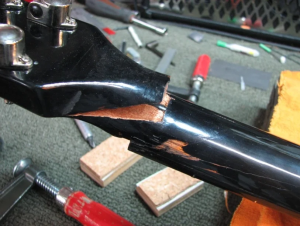-
Posts
7,516 -
Joined
-
Last visited
-
Days Won
133
Content Type
Profiles
Forums
Gallery
Downloads
Blogs
Events
Our Shop
Movies
Everything posted by willedoo
-
From a cultural perspective, Kintore is a community of predominantly Pintubi people. There's a small number of Warlpiri and Luritja people from neighbouring areas but it would be a lot easier for the Pintubi to maintain culture than those in large mixed communities.
-
It's probably correct to a certain degree. Language is definitely stronger the more remote you go. Toward the coast most original culture and language has been lost. Some are trying to resurrect some of it if there's an old auntie or uncle who remembers some of the things their grandparents told them. I think some on the coast are making up new stuff as the old ways are lost forever. In the remote areas I think it would vary from place to place. Some communities are big melting pots of different groups and if they've been that way for a long time, culture might be a lot weaker than other places with mainly one tribal group. I remember once listening to an anthropologist tell of the years he spent living with and studying the Pintubi people. He had a theory of different waves of migration into the country (I agree on that one) and how the earlier people graduated inland as others arrived. He had a map of Australia with an overlay of concentric circles denoting different zones. His theory was that the closer to the centre people were, the more ancient spiritual knowledge they had. He believed the Pintubi were at the apex of this. I worked on Pintubi land for a short time and only travelled through Kintore so never spent time with the people, but from that brief experience I didn't see any of the cultural stuff. When we were there in 2010, we were told some of the people occasionally went walkabout out in the desert and that at that time a family was somewhere out there on walkabout.
-
I've never been into Yuendumu, only driven past it on the way to W.A. across the Tanami. Have been into Papunya and Kintore in the Territory and Balgo and Yagga Yagga in W.A.. Kintore was a bit rough around the edges. Coming back through Papunya you could really see the difference between the two. Papunya was relatively clean from a rubbish perspective and the people were generally a lot better dressed and seemed to have a much better grip on hygiene. Balgo in W.A. always had a bad reputation but I don't know what it's like these days. We stayed a night in the priest's quarters back in the day when it was still a church mission. Yagga Yagga was a very small community in the Great Sandy south of Balgo. It wasn't very old when we worked near there for a few weeks in 1985. It had a sad history after that. The intention of it was good, but eventually different groups moved there and infighting and politics brought it down. It's abandoned now but as far as I know, some of the traditional owners go out there and do some maintenance with the hope of returning some day.
-
I don't know if it's changed these days but Hall's Creek in the 1980's had a real rhythm to it based around the fortnightly dole payments. What happened around town was dependent on what stage of the fortnight it was. The fortnight cycle was like watching lungs breathe in and out. There were two liquor outlets, the pub and the liquor store on the other side of town. On dole night, the pub would be cracking with hundreds of locals there drinking, while the liquor store was virtually abandoned. The younger ones would be in the front bar and the entire yard would be full. Older men would sit around in circles in the long grass of the neighbouring allotments. The paddy wagon would be working full time on that night ferrying people to the lockup. This would go on for a few days until the numbers gradually tapered off until there was almost nobody at the pub by the end of the fortnight. The reverse flow of people would be happening at the liquor store. As the money was running out, numbers would increase in the street outside the liquor store. On the last night of the fortnight there would be hundreds in the street outside the liquor store and the next night almost nobody as they'd all be back at the pub. Alcoholism was a big problem and caused a lot of malnutrition due to people living on packets of chips and twisties. Some of the women were organised. On the first day of the fortnight, they'd do a big shop at the supermarket before the hubby got hold of the money. That way at least they'd have food to last the fortnight. In the early 80's it was still a bit like the wild west, but by the mid 80's things were starting to change.
-
I'm not sure if I mentioned this before but my resident raven mate has lived here for quite a few years as one half of a breeding pair. It was quite educational watching them raise and train their brood every year. His wife disappeared about eighteen months ago and I assume she died. Mr.Crow as I call the raven (it sounds better than Mr. Raven) has been on his own until recently and now seems to have a permanent friend. I don't think it's a friend with benefits as he's probably past that due to his age. I certainly haven't seen any hanky-panky like cuddling together on a tree branch or mutual preening. But she seems to be a permanent presence these days and he calls out to her when there's food around and warns her when there's a threat. If the female of a breeding pair dies, the male will keep his territory and find a new mate, whereas if the male dies, the female will vacate the territory. I suspect she's a lonely widow he's found and he's invited her to shack up with him. It's possible they're just an old couple who have both lost their former partners. It makes sense to me as ravens who have spent most of their lives as part of breeding pair would probably find it hard to go and join the general murder when they lose their partner. From his point of view, better to find an old boiler and continue living a relatively secluded life separate from the general crowd.
-
They certainly have no fear of humans. If I put out some tucker for my raven mate, if the kookaburras have been lurking in wait they'll swoop down on it. I have to physically push them away from the food. The fact that you are standing right beside them is no problem to them, it takes a shove to move them. They are real gluttons and remind me of the pigs in Shaun the Sheep. The raven is smart and knows the routine. If the kookaburras try to get his food, I chase them away and confiscate the food so they lose interest and clear out. The raven will patiently wait around as he knows the kookaburras have a short attention span and that I'll bring the food back out when they are safely gone.
-

Don't get me wrong here, But I LIKE Donald Trump.
willedoo replied to Phil Perry's topic in Politics
His supporters are a daggy bunch of characters. -
It was a very small sugar glider, not much bigger than a large rat, so maybe one of the kids.
-
The kookaburras killed a sugar glider at my place yesterday. The sugar gliders have lived in the roof ridge cap on and off for a long time. Around mid morning I heard a thumping noise outside and went to investigate thinking it was the bush turkeys getting into something. A kookaburra had the dead sugar glider in it's beak and was bashing it against a piece of timber while his mate looked on. It's a bit of a mystery how it all happened. The sugar gliders are normally safely located in the roof by the time any kookaburras are out and about. They go out every night to feed and usually come back around daybreak. I did hear some unusual noises before all this happened. I guess it's possible the sugar glider lost it's grip and fell and the kookaburra got it on the ground. In the photo you can get an idea of the most exposed they ever get in daylight hours. They sometimes poke their heads out of the ridge cap, but it's hard to see a kookaburra flying into a confined area like that and successfully grabbing one.
-

Rebuilding the houseboat deck- zoro's fishing spot.
willedoo replied to Litespeed's topic in General Discussion
That's Zoro's dinner sorted; what are you blokes going to eat? -
Some ancient trivia - Booker T. and the MG's base player Donald "Duck" Dunn and guitarist Steve Cropper were both in the Blues Brothers Band with John Belushi and Dan Aykroyd. Here they are much earlier and sans beards in the MG's:
-
And one bad thing about the Gibson Les Paul guitar is that they are vulnerable to breaking the headstock off. That headstock is of the type that angles back from the guitar neck so that if they fall over backwards, there's a good chance of the head breaking off. It's a design flaw that Gibson have stuck with for some unknown reason. The problem is that the neck and head are a single carved piece of wood and is very thin in the region of the nut (the bone or plastic piece that raises the strings off the fretboard at the top end of the neck. It's a bad vulnerability considering the price of them.
-
One good thing about Gibson guitars is that they are all still made in the US. If it has Gibson written on it, it's made in the USA and not Mexico, China or Indonesia like some of the other big name brands are doing.
-
Watching all these music videos is dangerous I find. I get a bit carried away and almost bought another guitar yesterday. But I slapped myself and reasoned that the money would buy that new 10x5 tandem trailer that I really need much more than another guitar. The guitar is a type that has been on the bucket list since I was 20 years old and will happen one day. Maybe just not now. It's interesting how if you sleep on things, the next day can often bring better reasoning. Anyway, this is the guitar - a gold top Gibson Les Paul 70's Deluxe. And maybe, just maybe, I might sneak down on the weekend and have a look at it. Just out of interest, mind you..
-
Xcrement is account walled so this is a cut and paste of a post by David Kirichenko, a Ukrainian-American journalist who spoke with a tank crew: I spoke with a tank crew fighting in the battle for Toretsk. Here is what they told me about how tank warfare. “The Era of the Cautious Tank” In the forested areas surrounding the burning frontline town of Toretsk in Eastern Ukraine, the thunderous roar of artillery and the constant buzz of drones paint a vivid picture of the front in Donetsk Oblast. Here, soldiers from Ukraine’s 28th Separate Mechanized Brigade await orders for their T-64s, although their powerful machines now play a different role in a rapidly evolving war. “What I enjoy most about driving a tank is when you sit down and drive, and you feel the power of the tank — it’s as if the enemy can’t do anything to you,” says 23-year-old Bohdan, callsign Vendetta. A tank operator since the full-scale invasion began in 2022, Bohdan’s faith gives him courage in the face of danger. However, the invincibility he once felt in his armored behemoth is being challenged by a new threat: drones. Victor, known as Bee, commented: “Tanks aren’t as effective as they once were. It’s rare for us to see tank-on-tank action now.” This shift is so pronounced that even advanced Western tanks, like the US-provided M1A1 Abrams, have been pulled from the frontline due to their vulnerability to drone attacks. The sky above the Ukrainian positions is a constant battleground of its own. Enemy and friendly drones crisscross the airspace, hunting for valuable targets like heavy armor and artillery. This aerial cat-and-mouse game has fundamentally altered tank tactics. “The Russians aren’t idiots. They also understand our drones are hunting their tanks,” Bohdan says. This mutual threat has made both sides more cautious about deploying their armored units. “In 2024, you can have a $500 FPV drone take out a tank worth millions,” he adds, highlighting the cost-effectiveness of this new warfare. In response to the drone threat, tank crews on both sides have begun improvising. “Many people laughed at the Russians for welding plates and additional armor on their tanks [widely known as turtle tanks, for their appearance], but we’ve started doing the same to protect against enemy drones,” Bohdan says. However, he’s quick to point out that no amount of added armor can defend against everything, especially the ever-present danger of landmines. The unit was previously stationed in Kherson in 2022, where Bohdan says there were many fewer drones. Now on the Donetsk front, battles are artillery- and drone-dominated. The unit currently operates modernized T-64s, a Soviet-era vehicle updated in 2017. They’ve equipped the tanks with jammers to counter drones, though these are not foolproof. “It’s not guaranteed that the jammer will protect against all drones as they can operate at different frequencies,” Victor says. As the nature of combat changes, so too does the role of tanks on the battlefield. “Tanks have become a second priority in war,” Bohdan observes. “It’s now a war of artillery, drones, and infantry.” Instead of spearheading assaults, tanks are increasingly used more like mobile artillery, providing fire support from safer distances. The evolution of tank warfare brings with it new challenges. Victor, who has experience with the older Leopard I models provided by Germany, highlights the difficulties in operating foreign equipment. “We’ve struggled with manuals as everything is in German,” he says and adds that some of the older donated tanks lack adequate armor for current threats. Moreover, ammunition shortages further limit the effectiveness of tanks. The crew expresses frustration at having to ration their shells, reducing their impact even when they do engage. “Tanks will still be around in the future, but FPV drones have changed tank warfare forever,” Victor concludes.
-
Another income stream for her is selling her beginner's guides and 'how to...' E-books. What I like about that sort of thing is that it takes the power and industry domination away from the corporates and provides opportunity for the masses.
-
Here's that Brazilian lady on the guitar again. I posted it as a example of how people can make a good living using social media. Larissa Liveir came from relative obscurity and started posting her guitar videos armed with nothing but some musical talent and good looks. She does instrumental guitar covers with the occasional bit of keyboards thrown in. At this stage, she has over 3 million subscribers on YouTube, 1.6 million followers on Instagram, 825,000 followers on Tik Tok, and a measly 144,000 followers on Facebook. She's made over 2 million USD on YouTube alone, not counting the income from the other platforms and the sponsorship income. Assuming the sponsor companies let her keep the gear, she would likely have at least $100,000 worth of guitars, amps, keyboards and other equipment as she plays on a variety of equipment. Not a bad earner for someone playing other people's songs with no band. With the technology available these days it's a lot easier to do than in the past. In the old days, they had to gain the interest of a record company and then sign their life away with a rip-off contract. Now there's the internet and various social media platforms to promote their work, so plenty of musicians can work independently right from the start.
-
Right brain dominant Left brain dominant.
-
Hitler was the first thing I saw. If you squint your eyes you can see him better. I don't know why, maybe it narrows the peripheral vision and cuts some of the noise out.
-

Don't get me wrong here, But I LIKE Donald Trump.
willedoo replied to Phil Perry's topic in Politics
The lady posing beside it is bearly half it's height. -

Don't get me wrong here, But I LIKE Donald Trump.
willedoo replied to Phil Perry's topic in Politics
I saw a stuffed polar bear in Elko, Nevada that was preserved in an upright pose at full extension on the back legs. It was 10'4". This is the bear: https://yesshewentthere.com/2018/08/16/white-king-the-worlds-largest-stuffed-polar-bear-elko-nevada/ -
Birds sure are clever. I only get the very occasional magpie visit at my place as they know it's the resident raven's patch. However, they must know that I feed the raven. One magpie appeared on the verandah rail with a crook leg he couldn't put weight on. It didn't stop him from perching (standing on one leg) or flying but he couldn't walk to hunt for food. He knew it was a good bet I'd feed him until his leg got better and that's exactly what happened. Once he could walk again a week later he left and went back to his own territory.
-
Sounds like it would be a lot quicker than a molasses bath.
-
That must be what those water based rust converters do. They leave a black coating which they say can also act as a primer. It's good stuff, just a pity it's so expensive.
-

Don't get me wrong here, But I LIKE Donald Trump.
willedoo replied to Phil Perry's topic in Politics
Bears have arms - big ones.










